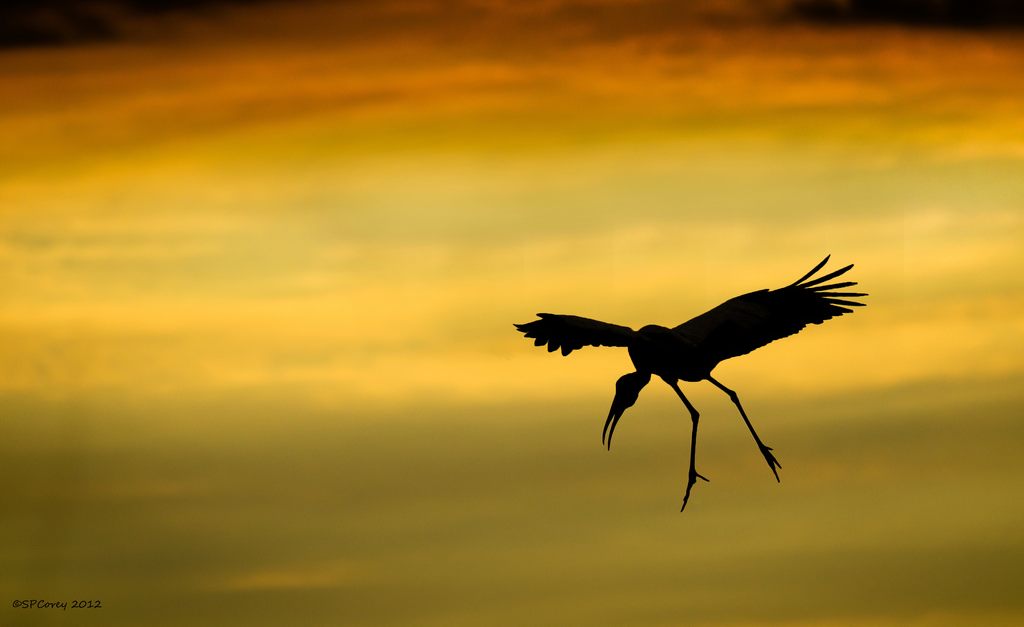In 1984, when the magnificent wood stork species was listed by the US government as endangered, its population was dropping by an alarming 5 percent per year — a pace that would have led to extinction by the year 2000. The past 30 years, however, produced a conservation success story culminating in today’s announcement that the wood stork population is no longer endangered.
The US Secretary of the Interior Sally Jewell made the announcement at the Harris Neck National Wildlife Refuge, home to the largest wood stork rookery in Georgia.
“Reclassification of the wood stork to threatened status does not diminish protection measures for the bird,” said U.S. Fish and Wildlife Service Director Dan Ashe. “We will continue to work with our partners to fully recover the bird, including with our counterparts in Florida, South Carolina and Georgia, and great organizations like Ducks Unlimited and the Corps of Engineers.”
Since 1984, the U.S. breeding population of wood storks has shown substantial improvement in the numbers of nesting pairs as a whole and an expansion of its breeding range.
Since 2004, the three-year averages (2003 to 2012) for nesting pairs ranged from 7,086 to 10,147, all above the 6,000 three-year average identified in the 1997 recovery plan as the threshold to consider reclassifying the species to threatened status. However, the five-year average of 10,000 nesting pairs, identified in the current recovery plan as the threshold for delisting, has not yet been reached.
When the Service originally listed the U.S. breeding population, the wood stork’s range included Florida, Georgia, South Carolina and Alabama. Breeding was primarily in Central and South Florida. Historically, the Florida Everglades and the Big Cypress ecosystems supported large breeding colonies. Since listing, its range has expanded north and west, and now includes portions of North Carolina and Mississippi, with significant nesting in Florida, Georgia, South Carolina and North Carolina.
The down-listing recognizes the wood stork’s ongoing recovery and the positive impact that collaborative conservation efforts over the last two decades are having on the status of the breeding population. With continued population growth, breeding range expansion and the minimization or removal of threats, the species could approach the biological milestones where it could be considered for delisting.
The Service continues to work with conservation partners such as the Natural Resources Conservation Service through its Wetlands Reserve Program, to protect natural wetlands and manage public lands to continue the recovery of the wood stork. For example, the Wetlands Reserve Program has restored more than 200,000 acres of wetlands in Florida and more than 115,000 acres in Alabama, Georgia and South Carolina.
Photo credit: Steve Corey – CC license




















